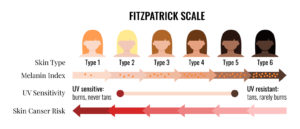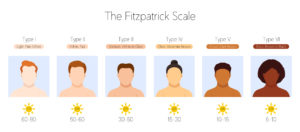
Top 3 Vitamins We Love for Skin Health
Learn why we love Vitamin B3, Vitamin C, and Vitamin D, and how each can make a difference in your skin health.
Dr Michael Rich is a specialist dermatologist who has been performing tumescent liposuction for over 30 years. Find out if Liposuction is suitable for you at ENRICH Clinic.
At ENRICH Clinic, we have a wide range of dermatological and cosmetic body treatments tailored to individual body and patient needs.
At ENRICH Clinic, our treatments are performed by our medical team consisting of doctors, nurses, and dermatologists and are tailored to each patient’s skin health needs.
ENRICH Clinic is committed to your skin health and well-being with a range of dermatological & cosmetic treatments tailored to the individual. Our treatments are performed by our medical team consisting of doctors, nurses, and dermatologists.
Skin health is essential for everyone. ENRICH Clinic has a wide range of technologies and dermatological solutions to help you achieve your skin care goals.
When we mention “skin type,” most of us immediately think of the common categories like normal, dry, oily, or combination. These classifications are correct, but they primarily revolve around the skin’s texture, hydration level, and how it reacts to products or environmental factors.
There’s another skin type classification that often goes unnoticed but plays a crucial role, especially when considering cosmetic procedures: the Fitzpatrick skin type. Here’s why we must be aware of it.
The Fitzpatrick skin type system categorises skin types based on their response to ultraviolet (UV) light. It was developed by Dr Thomas Fitzpatrick in 1975.
This skin type is characterised by pale white skin highly sensitive to UV rays. Individuals with this skin type often have light-coloured hair, blue eyes and pale skin, often with freckles.
White-skinned individuals fall into this category. They might achieve a light tan after repeated sun exposure but are prone to sunburns. This is common in people with blonde or red hair and blue, green, or hazel eyes.
This skin type is typically associated with light brown or cream-white skin. These individuals can tan to a moderate brown shade but risk sunburn.
People with moderate brown or olive (Mediterranean type) skin fall under this category. They tan easily and have a reduced risk of sunburn compared to the lighter skin types.
This skin type is characterised by dark brown skin, which is common among Middle Eastern or some African types. Individuals with this skin type tan very quickly and have a minimal risk of sunburn.
This is the darkest skin type, ranging from intensely pigmented dark brown to black common in those of African descent. Individuals with this skin type have natural protection against sunburn due to the high melanin content in their skin.

Understanding your Fitzpatrick skin type is more than just a classification; it’s a guide to better skincare, health, and cosmetic decisions. Here’s why:
Each Fitzpatrick skin type has a varying degree of susceptibility to UV radiation. For instance, individuals with Types I and II are at a higher risk of developing skin cancers like melanoma due to their skin’s heightened sensitivity to sun exposure. Recognising your skin type can help you understand your risk level and take appropriate preventive measures.
Also, while everyone should practice sun protection, it’s especially crucial if you have light skin. This means you should use broad-spectrum sunscreens, wear protective clothing, and avoid peak sun hours.
But that’s not to say those with darker skin types are safe. If you belong to this group, you still need sun protection, as prolonged exposure can lead to skin damage and potential health risks.
Our skin synthesises vitamin D when exposed to sunlight. However, the efficiency of this synthesis varies based on the Fitzpatrick skin type.
Lighter skin types can produce vitamin D more quickly than darker skin types. This means if you have darker skin, you might need more prolonged sun exposure to synthesise the same amount of vitamin D.
But again, you should balance this need with the risk of skin damage, making it crucial to understand your skin type and consult a healthcare professional about your vitamin D needs.

Your Fitzpatrick skin type can also guide you in selecting skincare products tailored to your skin’s needs. For example, lighter skin types might benefit from products with higher SPF or antioxidants to combat UV-induced damage. In comparison, darker skin types might look for products addressing hyperpigmentation or uneven skin tone.
Knowing your Fitzpatrick skin type is also crucial in cosmetic procedures, especially those involving lasers or intense pulsed light (IPL). Some treatments might pose risks like hyperpigmentation or scarring for specific skin types.
While the descriptions provided above give a general idea, a dermatological assessment is the most accurate way to determine your Fitzpatrick skin type. A dermatologist will consider your genetic background, observe your skin’s natural colour, and ask about your history of sun exposure, tanning, and sunburn.
But you can also get a rough idea by observing how your skin reacts to sun exposure over time and comparing it to the descriptions of the six skin types we mentioned above.
Before any treatment at ENRICH, we always check your skin type. Ready to start? Book an appointment with us now.
*With all surgeries or procedures, there are risks. Consult your physician (GP) before undertaking any surgical or cosmetic procedure. Please read the consent forms carefully and be informed about every aspect of your treatment. Surgeries such as liposuction have a mandatory seven-day cooling-off period to give patients adequate time to be sure of their surgery choice. Results may also vary from person to person due to many factors, including the individual’s genetics, diet and exercise. Before and after photos are only relevant to the patient in the photo and do not necessarily reflect the results other patients may experience. Ask questions. Our team of dermatologists, doctors and nurses are here to help you with any of your queries. This page is not advice and is intended to be informational only. We endeavour to keep all our information up to date; however, this site is intended as a guide and not a definitive information portal or in any way constitutes medical advice.
"*" indicates required fields
Combining Dr Rich’s dermatological skill with his knowledge of restorative skin regimes and treatments, the ENRICH range is formulated to help maintain and complement your skin. Our signature Vitamin C Day & Night creams are now joined by a Vit A, B,&C Serum and a B5 Hyaluronic Gel, both with hydration properties and much, much more.

Learn why we love Vitamin B3, Vitamin C, and Vitamin D, and how each can make a difference in your skin health.

We address skincare trends & debunk myths while also providing guidance on products & treatments you should avoid based on your skin type.

Makeup can temporarily make your skin look flawless & dewy, but it merely masks imperfections & may not address the root causes of your skin concerns.

Keep your skin looking and feeling its best with these upcoming skincare trends of the year. Learn more about the products, treatments, and cosmetics you’ll need to stay on top of the latest in aesthetics skincare.
Subscribe to the ENRICH newsletter and receive latest news & updates from our team.
Enrich Clinic acknowledges the Traditional Lands of the Wurundjeri Woi Wurrung and Bunurong peoples of the East Kulin Nations on which we work and trade. We pay respect to their Elders past, present and emerging. We extend our acknowledgement and respect to the LGBTQIA+ community who we welcome and support. Read our full Acknowledgement Statement here
